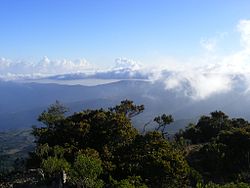This article needs additional citations for verification .(June 2025) |
Tourism in Somaliland is regulated by Somaliland's Ministry of Tourism.
This article needs additional citations for verification .(June 2025) |
Tourism in Somaliland is regulated by Somaliland's Ministry of Tourism.
The history of tourism in Somaliland is linked to that of Somalia. The tourism industry declined rapidly during the Somali Civil War. Since the declaration of Somaliland's independence and the establishment of a de facto legal government, stability has returned to everywhere but the easternmost part of the country.[ citation needed ] Somaliland's tourist attractions include archaeological and historical sites, and natural geographic features. [1] [2] Famous examples are Hargeisa, Zeila, the beaches of Berbera or the Cal Madow mountains. Being a country that doesn't legally exist and is still technically in civil war a part of Somalia, makes it attractive for proponents of "dark tourism". [3] Some may travel to Somaliland to claim that they've been to Somalia, albeit without much of the danger found there.[ attribution needed ]
While Somaliland is open for most international tourists, the region remains challenging to reach for many travelers. Most visitors to Somaliland enter through Djibouti or Ethiopia, as entering via sea or Somalia is not considered viable due to the Somali Civil War/Puntland-Somaliland Conflict.[ citation needed ]
In 2024, the United Kingdom's foreign office advised against all but necessary travel to the region, with a "no travel" advisory for British citizens. [4] [5] Other countries that advise against all but essential travel to the region include Canada, [6] the United States, [7] and Ireland. [8] Citizens of Egypt were asked to leave the territory by their government in 2024 due to rising tensions in the region. [9] Citizens of Taiwan have reportedly been blocked from entering the territory. [10]


